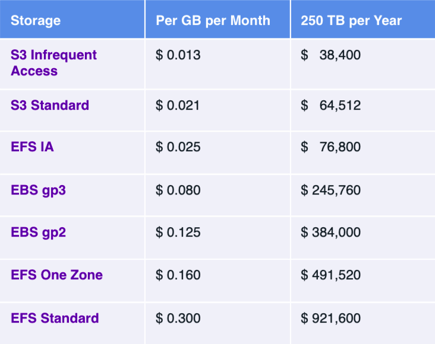How our customer cut costs and optimized their cloud investments
Everyone may be moving to the cloud… but not everyone is achieving the cost savings they’d like. Cloud expenses are rising so fast that some experts are calling it cloudflation, and many companies are stuck in the middle of their cloud migration with exorbitant bills and unrealized business outcomes. In one 2022 survey of large enterprises, KPMG found that a full 66% of customers did not actually lower their total cost of ownership when they moved their workloads to the cloud.
The costs have risen so much that some companies are even beginning cloud repatriation, or migrating workloads back to on-prem data centers. Others, however, are seeking new solutions to optimize their cloud investments and make the most of their digital transformation initiatives.
Recently, our CEO and Co-Founder Bob Lam and our VP of Security Engineering Zack Link sat down to discuss what happened when one of our customers, a Fortune 500 business aggressively moving to the cloud, experienced ballooning cloud costs. The company’s infrastructure team was tasked with reducing their cloud costs, and they turned to ShardSecure for help. Below, we’ll recap the full BrightTALK discussion and explain our solution to some common cloud challenges.
What were our customer’s cloud challenges?
Our Fortune 500 customer, who we’re leaving unnamed due to an NDA, was aggressively moving to the cloud in a lift and shift model. They were also offering self-service in the cloud so that team members could spin up storage and resources automatically as they needed them. But this meant that their IT team no longer had sole control of resource growth, and costs grew quickly.
Our customer was also worried about data availability in the cloud. To avoid downtime from cloud provider outages and cyberattacks, they needed to find a way to ensure strong data resilience.
But the main problem arose with the company’s legacy apps: internally developed apps that were older than the new infrastructures they were being moved to. In general, many legacy apps can’t be moved to the most cost-effective cloud storage options like AWS S3 object storage, and instead have to be migrated to more expensive tiers like EFS or EBS.

Our chart breaks down the cost difference for 250 TB of data in a single year for different storage tiers. We’ve used AWS for our example, but similar pricing models exist for other cloud providers.
The challenge for our customer, then, was to find a way to keep their apps in the cloud without breaking the bank. They didn’t want to move their apps back to their own data center or to cloud-adjacent data centers like Equinix, since that would be counterproductive to their cloud migration goals. And they couldn’t rewrite their apps to use object storage in place of more expensive options like EFS or FSx; it just wasn’t feasible.
Enter ShardSecure.
How did our customer optimize their cloud storage investments?
ShardSecure originated as a data security company for the cloud. We are an abstraction layer between your applications and your data at rest — a layer that provides strong data security, privacy, and resilience.
Cloud resource optimization wasn’t originally our target, but we’ve found that our data control platform strongly supports this business outcome. It provides the capability for applications to use object storage in a seamless, transparent way, leading to significant cost savings for companies with large amounts of data.
In the case of our customer, they simply pointed their VMs to the ShardSecure virtual appliance over iSCSI. To their applications, we looked just like a disk, but the backend was the inexpensive storage service of their choice. (Although we support almost any type of backend storage for the cloud, we generally see companies using inexpensive object storage like S3.)
The result? The customer is able to leverage much more affordable storage options without rewriting their apps or changing their workflows, opening the door to significant cost savings in the cloud. They also gained several other benefits that we’ll dive into below.
Maintaining data privacy
ShardSecure does not store any customer data. Instead, our Fortune 500 customer controls their own storage in the on-prem, cloud, and hybrid- or multi-cloud environments of their choosing. At no point does ShardSecure ever access or process their data.
We also protect data against third parties — everyone from cyberattackers to cloud storage admins — since our technology makes data unintelligible to all unauthorized users. This helps keep data confidential and compliant with cross-border data regulations.
Reducing complexity
In addition to enabling cost savings and data privacy, we were able to minimize our customer’s management burden. ShardSecure doesn’t require the use of encryption agents or endpoint management, reducing the impact on operations teams.
We appear as cloud and network storage to applications, making implementation extremely easy. Our plug-and-play approach allows for easy and transparent integration with no need to change user behaviors or data flows.
Our Fortune 500 customer can now seamlessly move data among storage locations — even from on-prem storage to the cloud and vice versa — with zero downtime.
Improving data resilience and native ransomware protection
ShardSecure also provides strong data resilience. Our technology performs multiple data integrity checks to ensure that customer data remains accurate and unaltered. In the event of any unauthorized changes, our self-healing data kicks in to reconstruct data transparently and in real-time.
This ensures that business operations can continue as usual during service outages and that data will remain unaffected by ransomware and other cyberattacks.
Conclusion
With the help of ShardSecure, our Fortune 500 customer was able to avoid rewriting their legacy apps and still store their cloud data in the most secure and cost-effective way. Our strong data security will protect the company from both malicious attacks like ransomware and accidental human errors like misconfigurations.
Additionally, with self-healing data and virtual clusters that can be run on-prem or in the cloud, our data control platform ensures high integrity and availability at multiple levels. Our customer can rest easy knowing that their data will remain accessible no matter what happens in the cloud around them.
Are you ready to regain control of your data? Visit our resources page or watch the full webinar on-demand to learn more.







